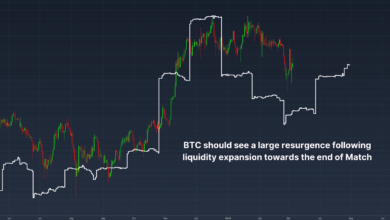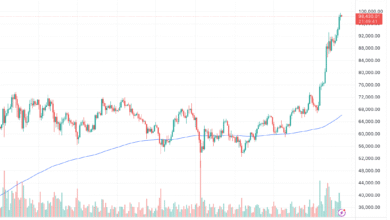
Bitcoin Market Faces Volatility Security Breaches and Regulatory
For the Bitcoin market, volatility in 2025 has been far from seamless, particularly in the first quarter of 2025. Severe market volatility, well-publicized security breaches, and changing laws have significantly impacted the cryptocurrency scene thus far this year. These difficulties have not only shaken investor confidence but also sharpened arguments about the future course of digital assets in the worldwide financial system.
Crypto Market Downturn
The main asset on the market, Bitcoin, dropped 25% in Q1 2025 and by early April dropped to its lowest value in more than a year. Several macroeconomic issues, notably geopolitical tensions, slower-than-expected economic growth in key regions, and unfavourable investor sentiment, contributed to the recession. As altcoins and tokens in various fields followed Bitcoin’s lead, this decline pulled the broader crypto market down with it.

Also affected were major U.S.-listed cryptocurrency companies, including Coinbase and Robinhood. Reflecting increasing uncertainty among conventional investors about the viability of cryptocurrencies as a solid financial sector, Coinbase’s shares declined by about 6%, while Robinhood’s shares dropped by approximately 4%. The slowdown in spot trading and rising sell-offs signal a shift in investor behaviour, as many decide to de-risk amid market uncertainties.
Crypto Security Crisis
Although declining prices were troubling, the increase in crypto-related thievery was far more disturbing. February delivered one of the most notable breaches in recent memory. Successfully breaking into Bybit, the second-largest cryptocurrency exchange worldwide, the North Korean state-backed hacking organisation known as “TraderTraitor” stole around $1.5 billion in digital assets.
This open attack reignited debates about the vulnerability of centralised systems and the increasing complexity of state-affiliated cybercrime activities. As the stakes climb, experts say, so will the frequency and complexity of such attacks.
Exchanges and wallet companies are implementing increased security measures to mitigate these risks. Trends in innovation include enhanced encryption methods, cold storage custody solutions, and AI-powered threat detection and monitoring. However, many believe that security will remain a cat-and-mouse game throughout 2025, as hackers continue to evolve at a rapid pace.
U.S. Crypto Regulations
The regulatory environment, particularly in the United States, probably had the most erratic character of the first quarter. The U.S. Securities and Exchange Commission (SEC) has unexpectedly adopted a less forceful approach toward Crypto Market enforcement. The rejection of a protracted lawsuit against Coinbase and the halt of similar legal measures against Binance and Kraken demonstrated this.
The Trump administration’s new pro-crypto stance is mainly responsible for this unexpected easing of legislative pressures. Said to be softening federal control, the government has disbanded a Justice Department crypto enforcement task team and placed crypto-friendly personnel in prominent roles.
Not everyone, meanwhile, is praising this strategy. Deletion of regulations, according to critics, can lead to a resurgence of dangerous financial products and bad actors, thereby endangering investors and compromising the sector’s credibility. Others fear that political considerations guide policy decisions at the price of long-term financial integrity.
EU Mica Regulation
The European Union adopted a more logical approach with the complete implementation of the Markets in Crypto-Assets (Mica) regulation in December 2024, while the U.S. regulatory picture stays erratic. Targeting increased transparency, consumer protection, and general market stability across EU member states, Q1 2025 was the first quarter under this unified structure.

Since the Mica laws offer clear guidelines and compliance criteria, European cryptocurrency companies have usually welcomed them. Many saw it as a possible template for other governments seeking to strike a balance between innovation and control. Analysts believe that this consistency could ultimately help the EU become a safer haven for investors, as well as for companies related to digital assets.
Final thoughts
The bitcoin sector finds itself at a critical juncture as Q1 draws to a close. One may argue that technical innovation and increasing acceptance still highlight the long-term potential of the industry. Conversely, constant security concerns and regulatory volatility—particularly in powerful markets like the United States—cause significant difficulties.
A few significant events will likely define the road forward: how governments handle security incidents, the direction of regulatory reform, and whether cryptocurrency companies can regain the confidence of consumers and investors. The market is currently in a precarious condition, full of possibilities but also highly risky.
As the subsequent phases of cryptocurrency’s development unfold, legislators, developers, and investors will need to remain vigilant and adaptable. One thing is sure: the narrative of 2025 is still in development.







